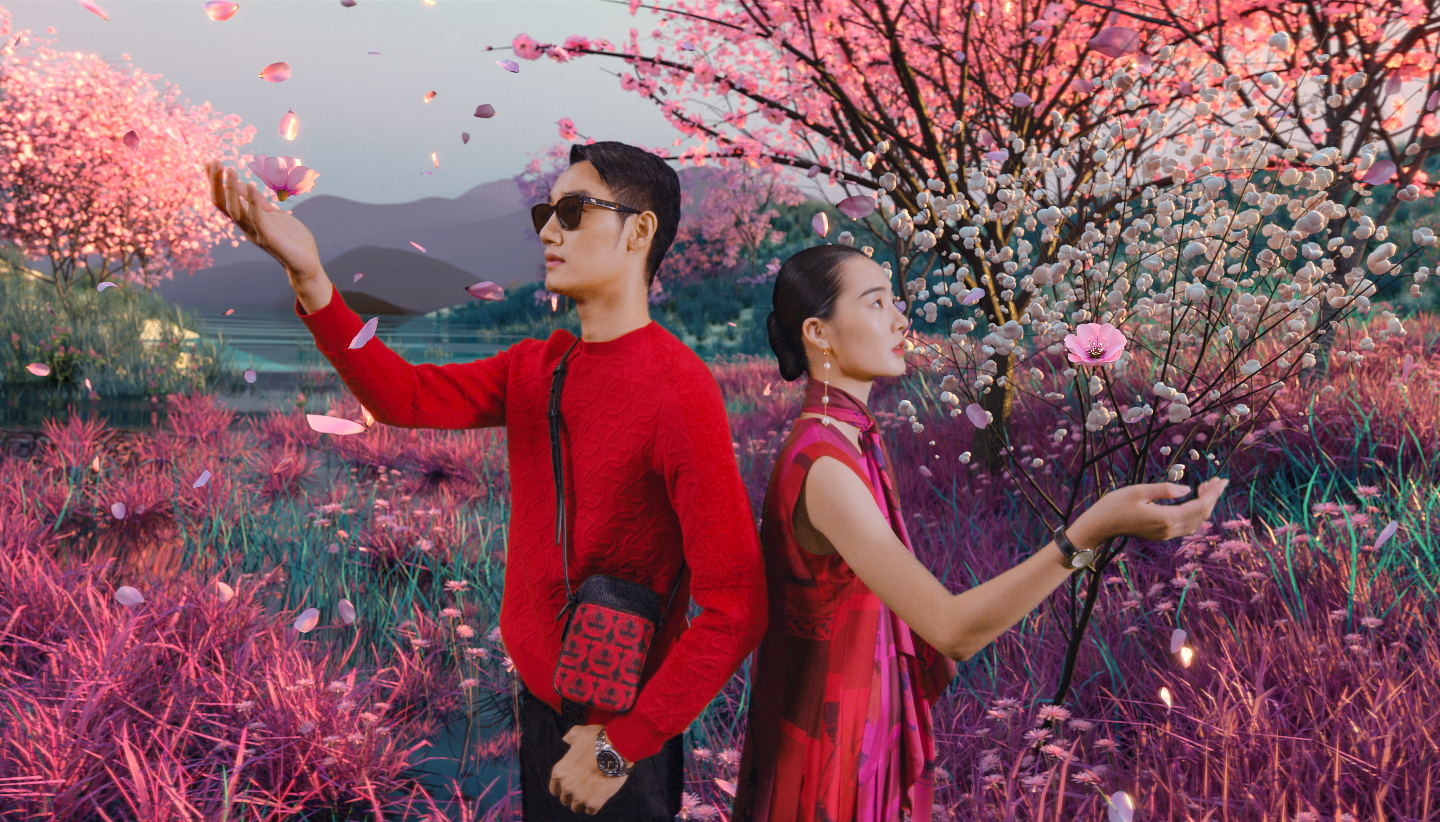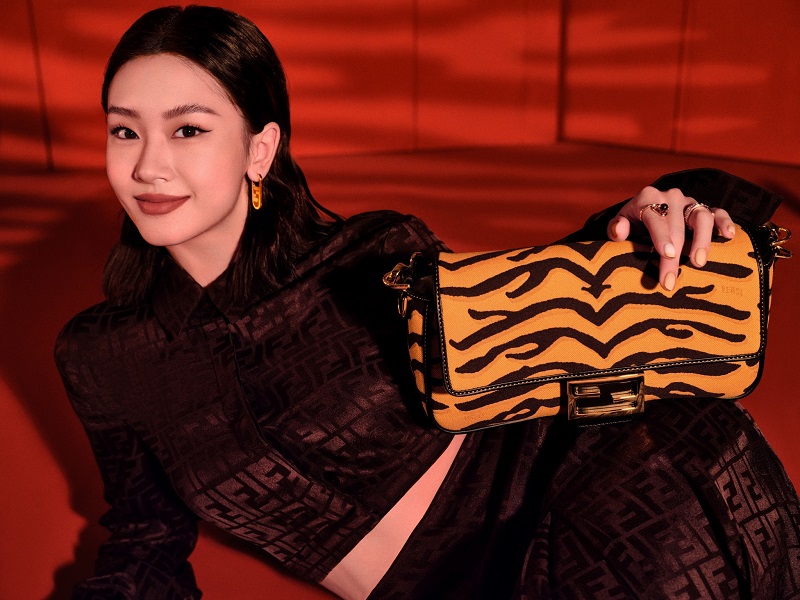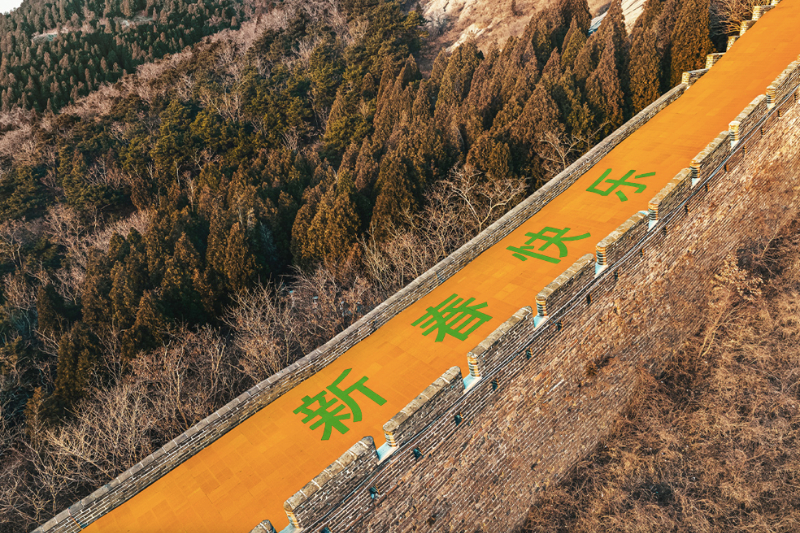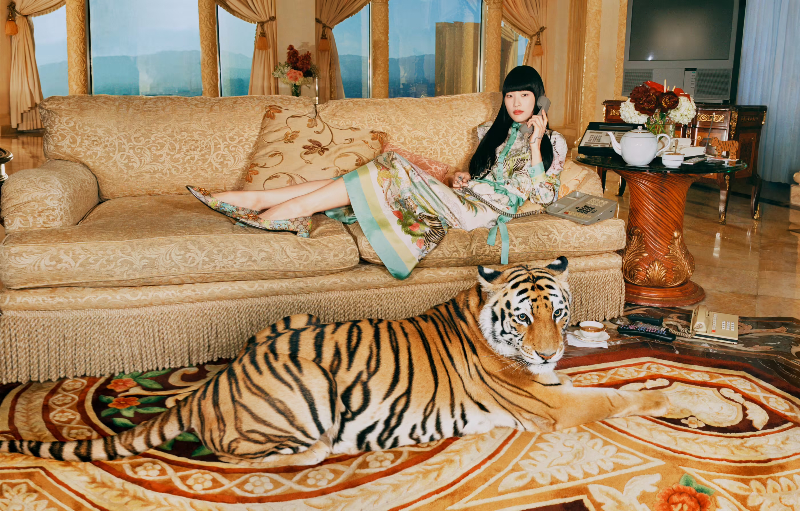
Salvatore Ferragamo’s 2022 Chinese New Year capsule collection is designed in collaboration with artists Sun Yuan and Peng Yu (Photo: Salvatore Ferragamo)
In Chinese culture, there is no bigger celebration than the Chinese New Year, a festival steeped in tradition and rituals. One such ritual includes donning brand new clothes to symbolise a fresh start, as we usher out the old year and welcome the luck and prosperity of the new one. International luxury fashion houses have joined in the festivities with limited-edition collections for the occasion.
It is a new tradition of globalised fashion, as more and more luxury brands permanently mark this Chinese holiday on their calendars. In an age where representation is key, these localised drops are a great step forward in inclusivity, where China and Chinese people the world over can feel represented by their favourite designer labels.
Of course, we should not forget that the luxury industry is very much a business, and a massive one at that, with the personal luxury goods market valued at €283 billion (roughly RM1.3 trillion) in 2021. China is undoubtedly luxury’s biggest growth market, representing 21% of the global market, second largest after the US. According to a report by Bain & Company, the country is on track to becoming the biggest luxury market by 2025, with Chinese consumers accounting for almost half of all luxury goods spending. It is clear why fashion’s biggest brands are flocking to China, and its most important holiday is the perfect opportunity to court customers from that country.
To celebrate the third animal in the zodiac, some brands have chosen to merge archival designs with ever-chic tiger stripes, adding some animalia to beloved classics. Fendi’s Spring Festival 2022 features prints inspired by the Siberian tigers found in the northeastern region of China on pieces such as its signature Baguette bag. Burberry’s celebratory capsule also has the graphic stripes embroidered on popular styles like its Lola and Olympia bags.
fendi.jpg

Perhaps the biggest stroke of good fortune (the Chinese are big on that) was enjoyed by Valentino. The tiger has been an icon of the maison since it appeared as the first look from the Haute Couture Fall/Winter 1967/68 collection, and was immortalised when German model Veruschka was photographed for Vogue in a coat from the collection. This same motif has found its way back into this year’s Lunar New Year collection.
Coach and Moschino have chosen to take the adorable route, with the former dressing up its fun-loving mascot Rexy the dinosaur in a tiger onesie and putting it on bucket bags and T-shirts, and the latter tapping nostalgia with a capsule collection featuring childhood cereal flakes hero Tony the Tiger.
However, the campaigns that resonated most were the ones that built deeper, emotive connections and showed cultural understanding and sensitivity, something often underestimated by Western luxury brands with limited knowledge of the intricacies of Chinese culture. Furthermore, with millennial and Gen Z consumers expected to account for about 70% of personal luxury goods sales by 2025 according to estimates by Bain & Company, luxury brands will need to evolve and align themselves with the cultural, social and environmental values of this next generation of luxury consumers, who are generally more socially conscious.
One way of creating a deeper connection with the culture is to lean on the local communities, like Salvatore Ferragamo has done. Staying true to its history of uniting art and culture with fashion, the brand called upon Chinese artists Sun Yuan and Peng Yu to create a print inspired by traditional Chinese paintings. The print, showing the tiger playing with other wild creatures in a classic Chinese garden, will be integrated into its accessories. This unique crossover of an Italian fashion house with Chinese talents makes for an impactful collaboration.
bottega_veneta_great_wall_of_china_2022.jpg

Bottega Veneta, on the other hand, went big, literally, this year. It took over a section of the Great Wall of China with an enormous digitally screened public art installation that displayed the message “Happy New Year” in Chinese characters, followed by “Bottega Veneta” in English in the brand’s signature green mixed with a vibrant tangerine, a symbol of luck for the Chinese (this colour also featured in its limited-edition festive collection).
In addition, the Italian brand pledged a donation to support the renovation and maintenance of the Shanhai Pass, the Great Wall of China’s easternmost stronghold. It is a different approach that makes a powerful statement about cultural appreciation and exchange and will surely earn strong brand equity among young consumers.
As for Prada, instead of releasing a tiger-inspired collection, it has embarked on a charitable project aimed at safeguarding the animals. Under “Action in the Year of the Tiger”, the brand is making a donation to the China Green Foundation’s Walking with Tiger and Leopard programme to raise awareness of wildlife and biodiversity protection in China.
It is also organising an art project, inviting art school students globally to create artworks with their own interpretation of the tiger. Entries will be judged by a jury that includes Chinese artists Liu Ye and Lu Yang, and selected pieces will be used in other campaigns to come in 2022. These activities put cultural and social relevance at the forefront, highlighting Prada’s dedication to cultural integrity.
gucci_cny_2022.jpg

Probably the most buzzworthy collection comes from Gucci, one of the most popular brands in China. The brand is charting the path to becoming a luxury fashion house that is also an enabler of cultural, social and environmental change. The capsule is a staggering 83-piece collection of ready-to-wear pieces and accessories for men and women. It features a new print, a reinterpretation of a 1960s archival Flora print by Vittorio Accornero that places the tiger against a pastel palette and lush backdrop, borrowed from traditional Chinese art. In addition, the words “Gucci Tiger” in a collegiate typeface cover pieces ranging from graphic sweatshirts to wallets.
The collection is presented in an elaborate campaign featuring real tigers (that were photographed separately, with animal welfare organisation American Humane monitoring the set), adding even more significance to this thoughtful, dedicated collection. Finally, Gucci continues to donate to the Lion’s Share Fund as it has since early 2020; the programme works to protect endangered species and conserve their natural habitats.
It would seem that we are spoilt for choice this Year of the Tiger, and these special localised collections from luxury brands are growing every year, with initiatives getting more culturally aware and socially driven. Now that is an auspicious start to the Chinese New Year.
This article first appeared on Jan 24, 2022 in The Edge Malaysia.


